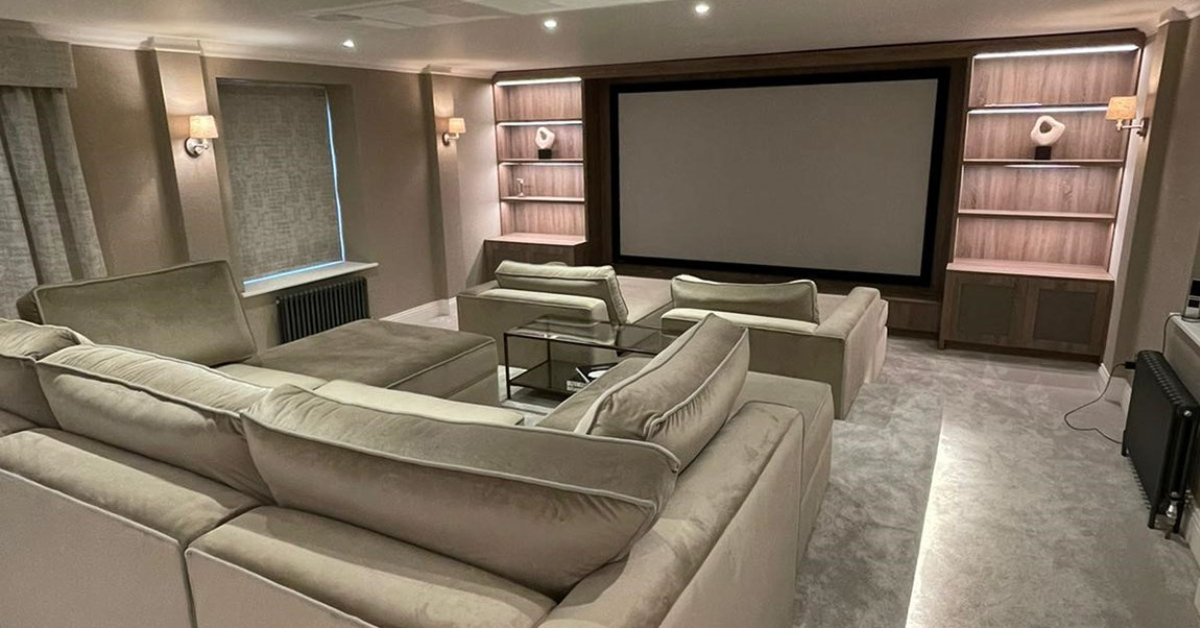The pandemic has had a major impact on interior design trends, with a notable shift in how people are now choosing to live in their homes.
In a relatively short period, the home has become a place to work, exercise, relax and even attend school – and this continues to be one of the single biggest influences on design.
So, what does this mean for the future of interior design? Here’s how the design of our homes are changing and evolving as a reaction to the health crisis and the need for more adaptable, flexible spaces, according to interior designers from the Harrogate district.
No expense spared
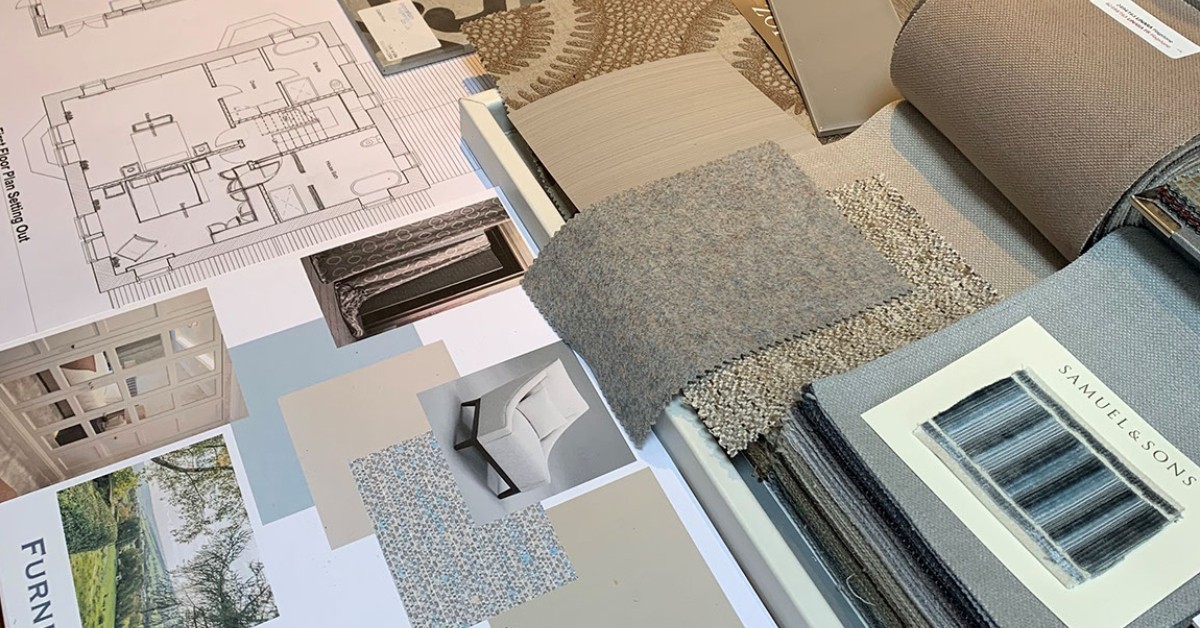
Design ideas at Furnish & Fettle.
As a result of multiple lockdowns, people have been spending more time in their homes than ever before and there has also been a major surge in moving to bigger properties. This has led to more investment in design and interior designers are in greater demand than ever – no longer just an asset of the rich and famous.
Elisa Fanella, of Elisa Interiors, on Tower Street, Harrogate, said:
“It has been the busiest 18 months out of my 11 years as a self-employed interior designer. It has been an interesting shift, as at the start of the pandemic it was all very worrying, wondering if my business going to survive, but because people are spending so much more time at home, houses have become the main investment in their life.”
Read More:
- Stray Gardener: summer pruning… it’s a snip!
- Stray Gardener: Dividing herbaceous perennial plants
- Property Gold: What next for the phenomenal Yorkshire property market?
Eleanor Goddard, director of Furnish and Fettle, which has showrooms in Harrogate, Wetherby and Pocklington, said:
“We are definitely seeing a huge increase in the number of people wanting the help of an interior designer.
“Everybody is doing their homes up. People have been stuck at home a lot more and have realised the value of making their houses beautiful and having a space which is fluid. People are using their houses in a different way, such as for homeschooling and working from home.
“The other thing is because people haven’t been going away on holiday and spending as much, some have managed to save and they see the value of spending on their home. Other people have moved because their house is no longer serving their needs and when they move into a house they want to put their own stamp on it.
“There’s a general move towards people seeing interior design as important.
“A lot of professional people would have a cleaner and someone who mows their lawn, interior designers have perhaps moved into that realm. It’s fair to say it used to be more of a service for the wealthy, but now people are saying ‘you know what? I just want my home to feel like a home for me’.”
A focus on wellbeing
After spending months at home, many have decided they love their houses and want to stay but need more space and have chosen to extend.
However many, particularly those who have lived in apartments, have decided to move to bigger properties with an outside space or to a more rural location surrounded by countryside. An emphasis on wellbeing in the home has had a major influence on these decisions.
Elisa said:
“The house has become a place for wellbeing. In that respect a lot of money has been invested in houses and refurbishment because of that.
“People want to be in an environment where they spend their lives and are happy and have all the possible commodities.
“They want something that makes them happy looking at it. From walls to ceilings, windows, everything has to convey the sense of wellbeing and make us smile at the same time.
“In particular people have been using light, not just as a functional element, but to create that calmness and give you that sense of peace.”
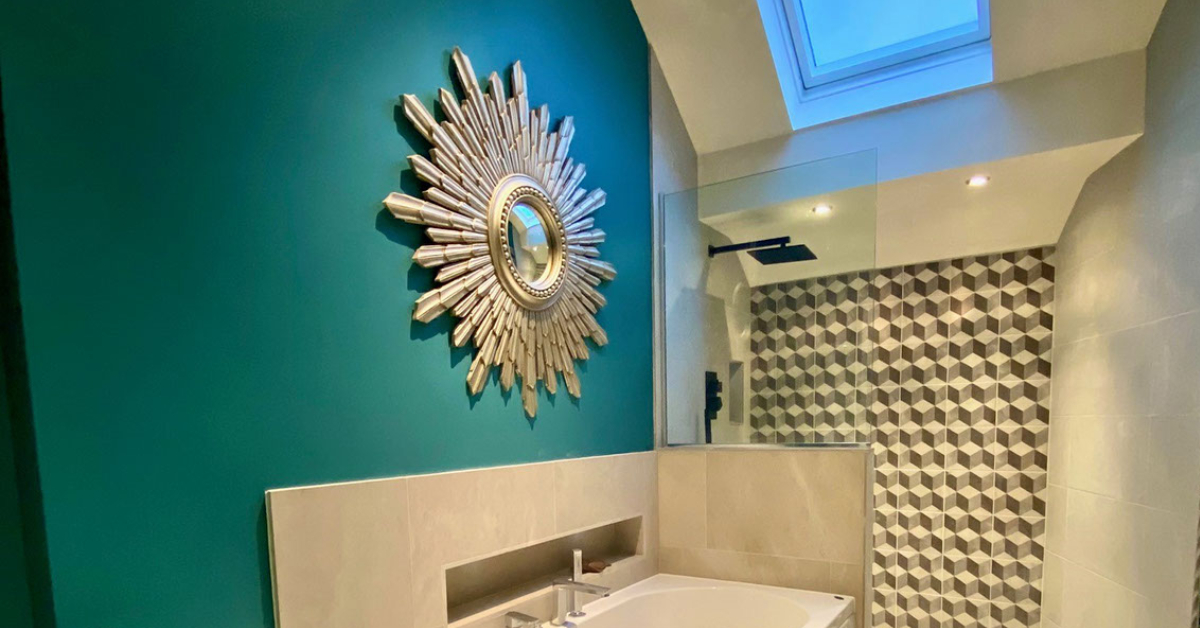
Natural and electric light flood this bathroom designed by Elisa Interiors.
Zoning
Zoning – which means separating areas according to their function – has gained momentum in the wake of the pandemic, with a need for different areas for work, entertaining, family time and wellness.
A clever way to create sub-spaces, which cater for these different needs, is to zone.
Eleanor said:
“People are wanting to look at how to use a space. They are looking to zone areas, so they can have an area to do work or an area to do yoga or relaxation. They want a space for them.
“In zoning areas, because people aren’t going out as much, they are eating at home or entertaining at home, there’s a pull towards creating luxurious dining rooms.”
Cinema rooms and home bars
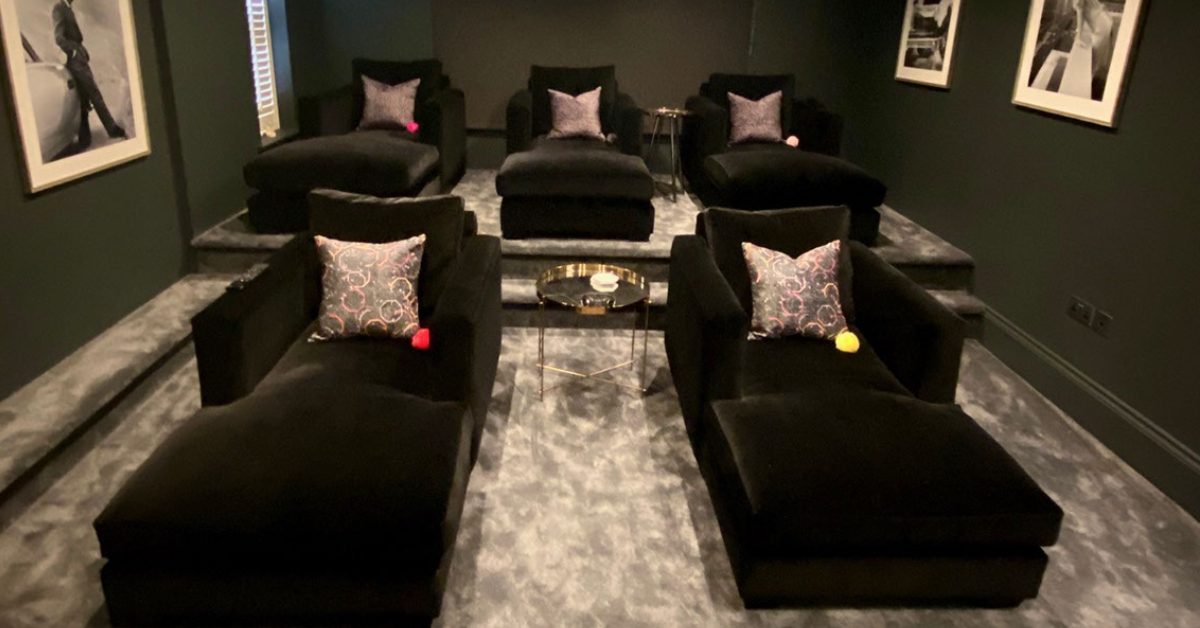
A cinema room designed by Elisa Interiors.
A home cinema provides a luxurious addition to any large home with space to spare, and provides opportunities for entertaining at home – or just enjoying movies with family.
There has also been a rise of the home bar, with more and more people choosing to host cocktail evenings at home.
Elisa said:
“Cinema rooms are a big trend as they are spaces where you can be with your family. I find people call it a family room and in the middle you have a big TV, an audio system and a place where you can play your X-Box or PlayStation and the kids can also be in there with their friends.
“It’s all about having everything you want in your own home.”
Eleanor said:
“More people are creating home bar areas and the bigger properties will have a home cinema room. Home bar areas were actually coming into fashion before the pandemic with gin and cocktail trolleys, but people are now having bars built in their homes and there’s a move back towards that.”
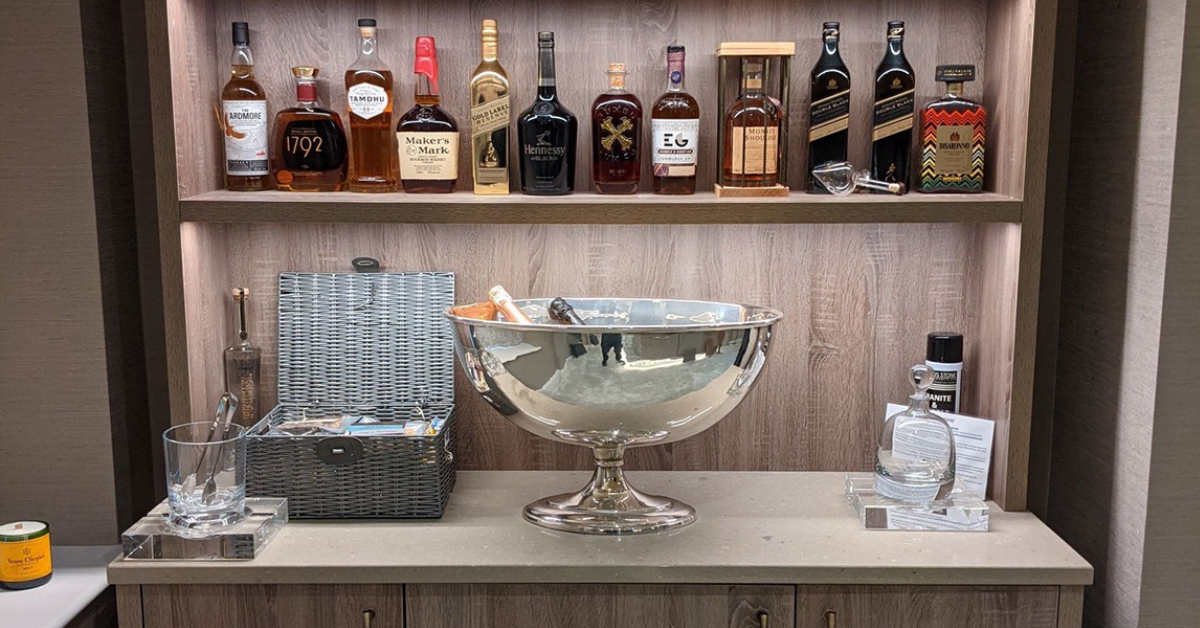
A home bar designed by Elisa Interiors.
Luxurious kitchens and bathrooms
With people having more time on their hands during lockdown, and with restaurants being closed, many turned to cooking as a form of indulgence and entertainment. People also focused on their bathrooms, which became many peoples’ sanctuary and place to escape.
Elisa said:
“Many people were cooking in the first lockdown and were making things like their own bread and own pasta and that has made people realise the limits of their kitchen, so this has been a particular area people have wanted to improve.
“People want the coffee machine, the larder, the spice racks in drawers and space to cook, they want the top notch oven and accessories.
“Bathrooms have also become a room in the house where you can indulge yourself. All sorts of extras have gone in and people have introduced baths as well as a shower.”
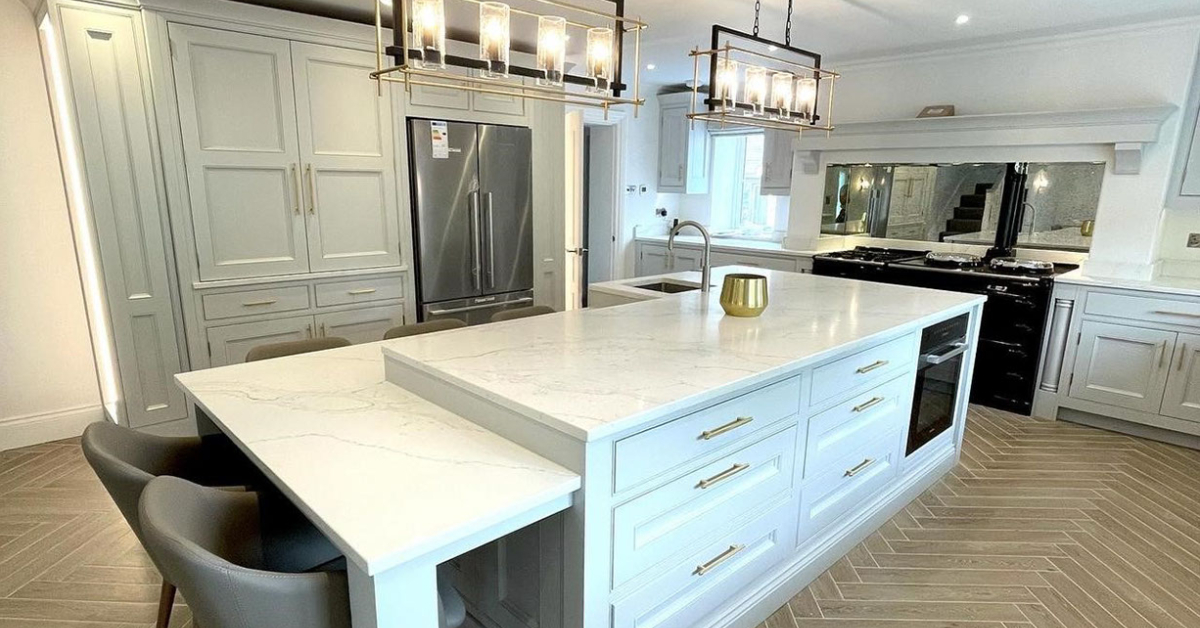
A luxurious kitchen designed by Elisa Interiors.
Home offices
With many now fully accustomed to a new, more flexible way of working, home offices have become hot property. Closing the door at the end of a working day has helped many workers to enforce that work-life balance.
Elisa said:
“A lot of spaces have been redesigned. We are just doing one at the moment, where we are converting a dressing room into a home office. Even the smallest corners of a house can take a home office. That has been key, trying to find where you can put a desk, a monitor, storage and a printer. The home office has been crucial for some people.”
Natural and raw materials
The growing focus in design on products made from wood, wool, stone and ceramics add a human dimension to the home environment that may have beneficial effects on health and happiness.
Elisa said:
“I think we felt somehow Mother Nature was trying to tell us something. There has been this trend of trying to show in some way what is organic and what is belonging to the outside. Suddenly everybody wants to bring it inside. So we have seen people using a lot of natural materials like marble, wood and limestone.
“Although I’m very much the queen of colour, I have noticed how much this year I have worked with neutrals and textures and I have tried to create an ambience and convey the sense of coziness which has a welcoming, relaxing and peaceful kind of atmosphere when you walk in.”

